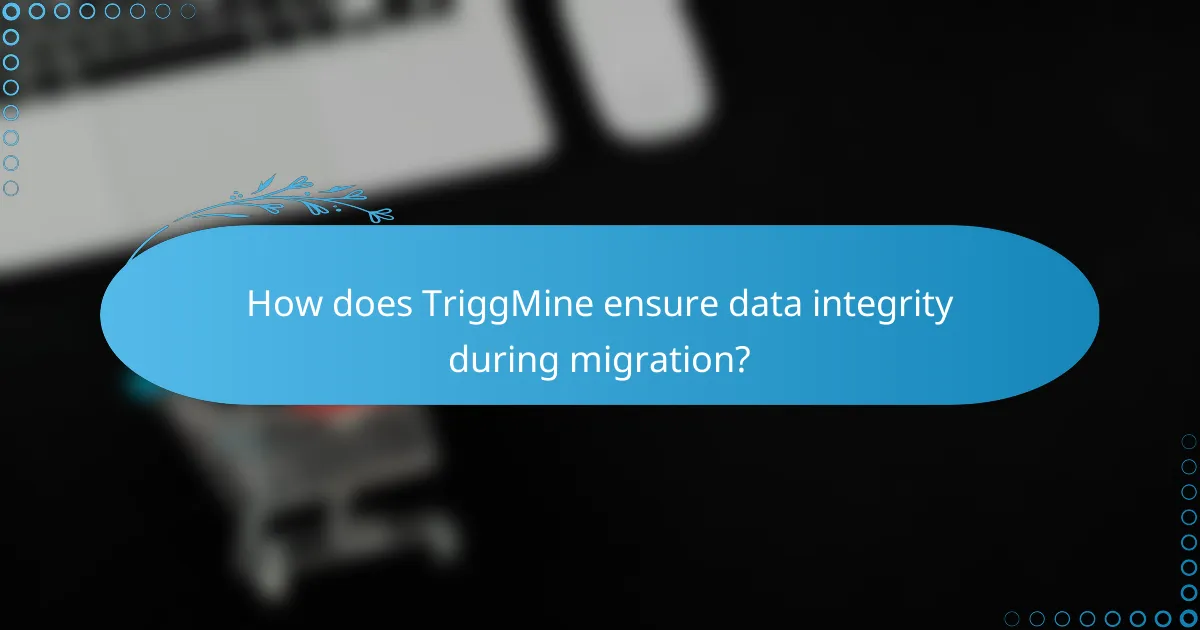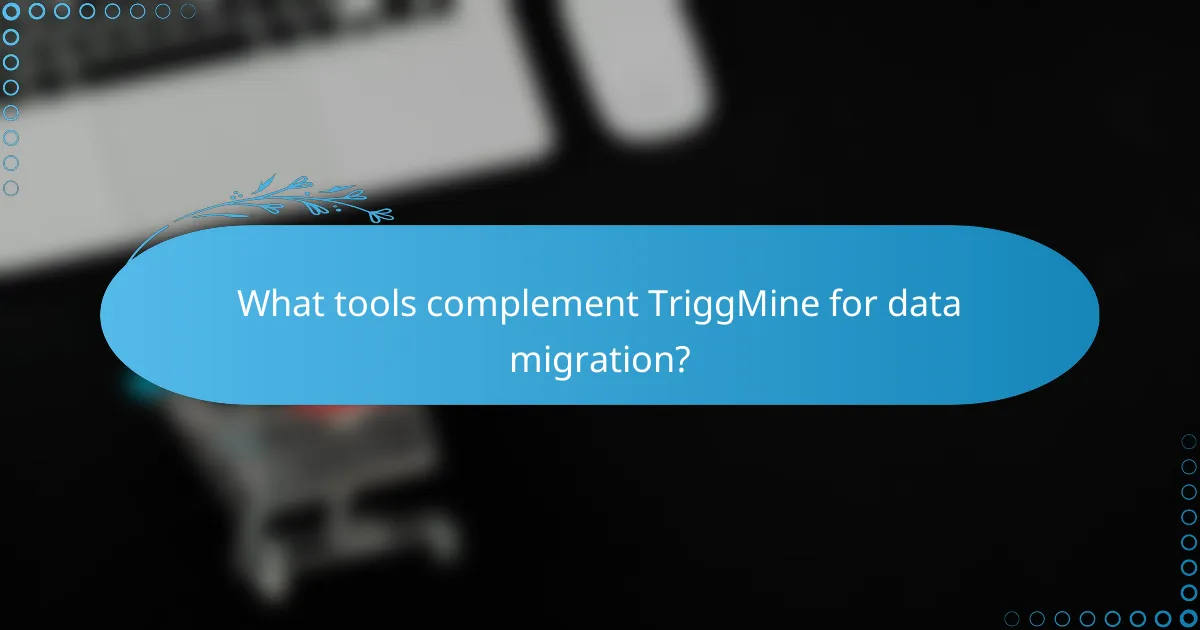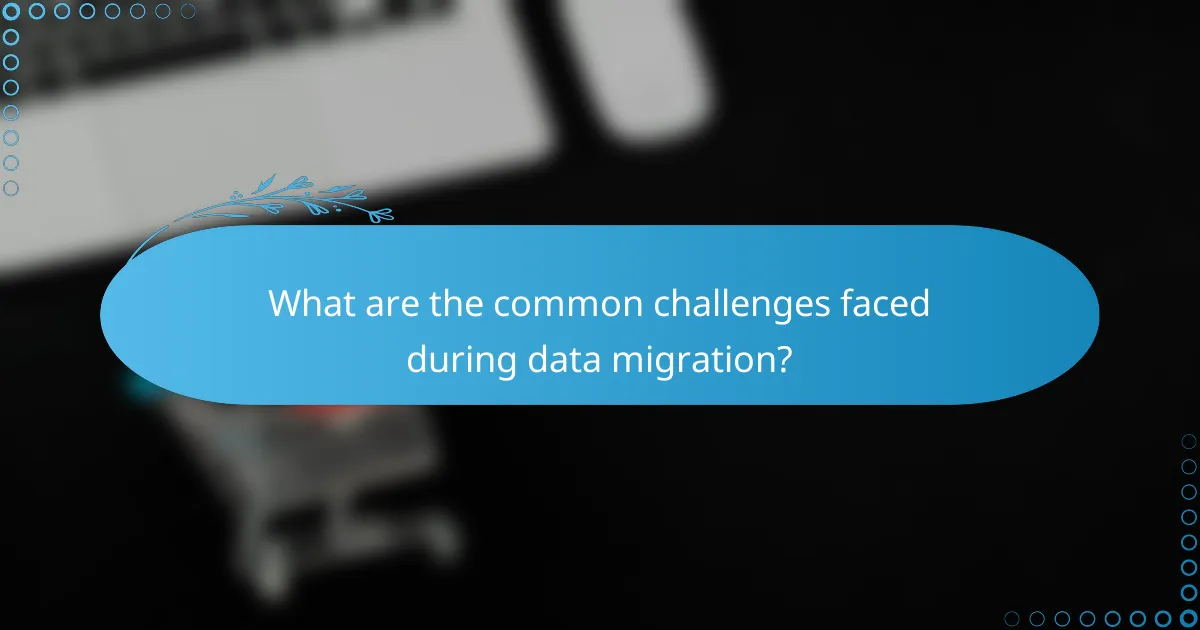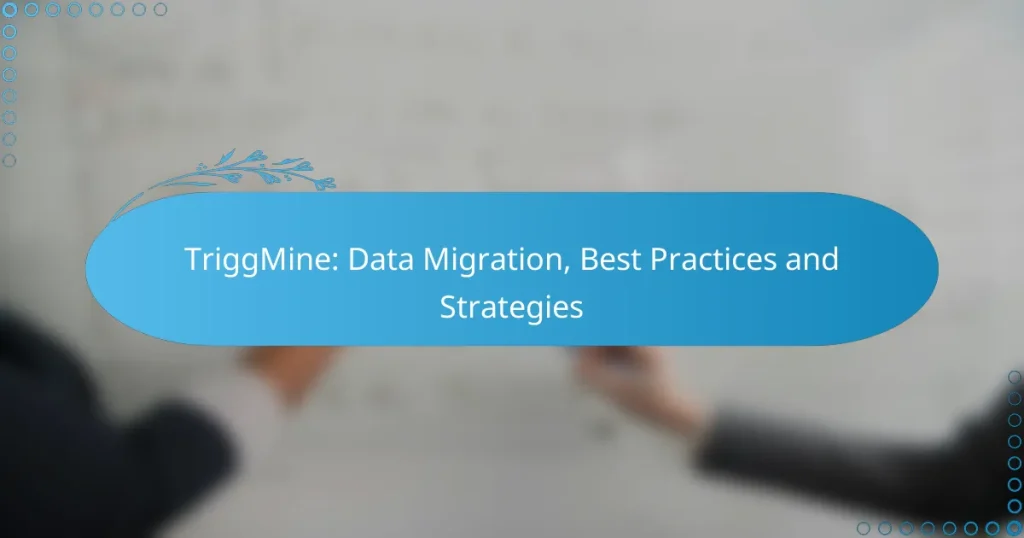Data migration with TriggMine involves careful planning and execution to ensure accuracy, minimize downtime, and maintain data integrity. By following best practices such as implementing automated error detection and utilizing cloud storage, organizations can streamline the migration process while safeguarding their critical information. These strategies not only enhance efficiency but also ensure that data remains secure throughout the transition.

What are the best practices for data migration in TriggMine?
Best practices for data migration in TriggMine focus on ensuring accuracy, minimizing downtime, and maintaining data integrity. Following these guidelines can streamline the migration process and reduce the risk of errors.
Data mapping accuracy
Data mapping accuracy is crucial for a successful migration. It involves creating a clear blueprint that aligns source data with the target system’s structure. Ensure that data types, formats, and relationships are correctly defined to prevent mismatches.
Utilize tools that automate data mapping to enhance precision and efficiency. Regularly review and update the mapping as necessary to accommodate any changes in data requirements.
Testing and validation
Testing and validation are essential steps to confirm that the migration process works as intended. Conduct thorough tests on a small subset of data before the full migration to identify potential issues. This can include checking for data loss, corruption, or incorrect formatting.
After migration, validate the data in the new system against the original source to ensure completeness and accuracy. Document any discrepancies and address them promptly to maintain data integrity.
Incremental migration approach
An incremental migration approach involves transferring data in smaller, manageable batches rather than all at once. This method reduces the risk of overwhelming the system and allows for easier troubleshooting if issues arise.
Consider prioritizing critical data first, followed by less essential information. This strategy helps maintain business continuity and minimizes downtime during the migration process.
Documentation and training
Comprehensive documentation is vital for guiding the migration process and ensuring all stakeholders understand their roles. Create detailed records of the migration plan, data mappings, and any changes made during the process.
Provide training for team members on the new system and any updated processes. This preparation helps users adapt quickly and reduces the likelihood of errors post-migration.
Post-migration support
Post-migration support is critical to address any issues that may arise after the migration is complete. Establish a support plan that includes monitoring system performance and user feedback to identify potential problems early.
Offer ongoing assistance and resources for users as they acclimate to the new system. Regular check-ins can help ensure that the migration was successful and that the system meets business needs effectively.

How does TriggMine ensure data integrity during migration?
TriggMine ensures data integrity during migration by implementing robust processes that include automated error detection, data encryption protocols, and comprehensive audit trails. These measures work together to maintain the accuracy and security of data throughout the migration process.
Automated error detection
Automated error detection is crucial for identifying discrepancies during data migration. TriggMine employs algorithms that continuously monitor data transfers for inconsistencies, such as missing records or format mismatches. This proactive approach allows for immediate corrective actions, minimizing the risk of data loss.
To enhance reliability, it’s advisable to set thresholds for acceptable error rates. For instance, aiming for an error rate below 1% can help ensure that the migration process remains efficient and effective.
Data encryption protocols
Data encryption protocols safeguard sensitive information during migration by converting it into a secure format that unauthorized users cannot access. TriggMine utilizes industry-standard encryption methods, such as AES-256, to protect data both in transit and at rest.
When selecting encryption protocols, consider the regulatory requirements specific to your industry. For example, organizations handling personal data may need to comply with GDPR or HIPAA, which mandate stringent data protection measures.
Audit trails and logs
Audit trails and logs provide a detailed record of all actions taken during the data migration process. TriggMine generates comprehensive logs that track data access, modifications, and transfers, enabling organizations to review and verify data integrity post-migration.
Implementing regular audits of these logs can help identify potential issues early. Establish a routine review process, such as weekly checks, to ensure that any anomalies are promptly addressed, maintaining the overall integrity of the data.

What strategies can enhance data migration efficiency with TriggMine?
To enhance data migration efficiency with TriggMine, focus on integrating APIs, utilizing cloud storage, and prioritizing critical data. These strategies streamline the migration process, reduce downtime, and ensure that essential information is transferred securely and effectively.
Utilizing API integrations
API integrations allow seamless communication between TriggMine and other systems, facilitating real-time data transfer. By leveraging APIs, organizations can automate data migration tasks, minimizing manual input and reducing the risk of errors.
Consider using RESTful APIs for their simplicity and widespread support. Ensure that your APIs are well-documented and tested to avoid potential bottlenecks during the migration process.
Leveraging cloud storage solutions
Cloud storage solutions provide scalable and flexible options for storing migrated data. Using services like AWS, Google Cloud, or Azure can enhance accessibility and security during the migration phase.
Evaluate your cloud provider’s compliance with data protection regulations relevant to your region, such as GDPR in Europe or CCPA in California. This ensures that your data remains secure and compliant throughout the migration process.
Prioritizing critical data
Identifying and prioritizing critical data is essential for an efficient migration. Focus on transferring the most important datasets first to minimize disruptions and ensure business continuity.
Develop a data inventory that categorizes information based on its importance and usage frequency. This approach allows you to allocate resources effectively and address any potential issues with high-priority data early in the migration process.

What tools complement TriggMine for data migration?
Several tools can enhance data migration processes when using TriggMine, including Zapier, Airtable, and Google Cloud. These tools help automate workflows, organize data, and provide reliable storage solutions, ensuring a seamless transition of information.
Zapier for workflow automation
Zapier is a powerful automation tool that connects TriggMine with various applications, streamlining data migration workflows. By setting up “Zaps,” users can automate repetitive tasks, such as transferring data between TriggMine and other platforms without manual intervention.
For example, a Zap can automatically add new contacts from a form submission directly into TriggMine, reducing the risk of errors and saving time. When using Zapier, it’s essential to monitor your Zaps regularly to ensure they function correctly and to troubleshoot any issues promptly.
Airtable for data organization
Airtable serves as an excellent database solution for organizing data before and after migration with TriggMine. Its user-friendly interface allows users to create customizable tables, making it easy to manage and visualize data effectively.
Consider using Airtable to prepare datasets by cleaning and categorizing information, which can then be imported into TriggMine. Regularly reviewing your Airtable setup can help maintain data integrity and ensure that your migration process remains efficient.
Google Cloud for storage
Google Cloud offers scalable storage solutions that are ideal for backing up data during the migration process with TriggMine. Utilizing Google Cloud ensures that your data is secure and accessible, providing peace of mind during transitions.
When migrating large datasets, consider using Google Cloud Storage to hold temporary files or backups. It’s advisable to establish a clear structure for your data storage to facilitate easy retrieval and organization, which can significantly streamline your overall migration efforts.

What are the common challenges faced during data migration?
Data migration often presents several challenges that can impact the success of the process. Key issues include data loss risks, downtime management, and compatibility issues, each of which requires careful planning and execution to mitigate potential problems.
Data loss risks
Data loss is a significant concern during migration, as transferring large volumes of information can lead to incomplete or corrupted data. To minimize this risk, it’s essential to conduct thorough backups before starting the migration process.
Implementing a verification step post-migration can help ensure that all data has been accurately transferred. Regularly testing data integrity during the migration can also identify issues early, allowing for timely corrections.
Downtime management
Minimizing downtime is crucial for maintaining business continuity during data migration. Organizations should plan migrations during off-peak hours to reduce the impact on users and operations.
Utilizing strategies such as phased migration or parallel running can help manage downtime effectively. These approaches allow for gradual transitions, enabling users to access critical systems while the migration is underway.
Compatibility issues
Compatibility issues can arise when migrating data between different systems or platforms. It’s vital to assess the compatibility of the source and target systems before migration to avoid data format discrepancies.
Conducting a thorough analysis of data schemas and structures can help identify potential conflicts. Additionally, using middleware or data transformation tools can facilitate smoother transitions by ensuring that data is formatted correctly for the new system.


